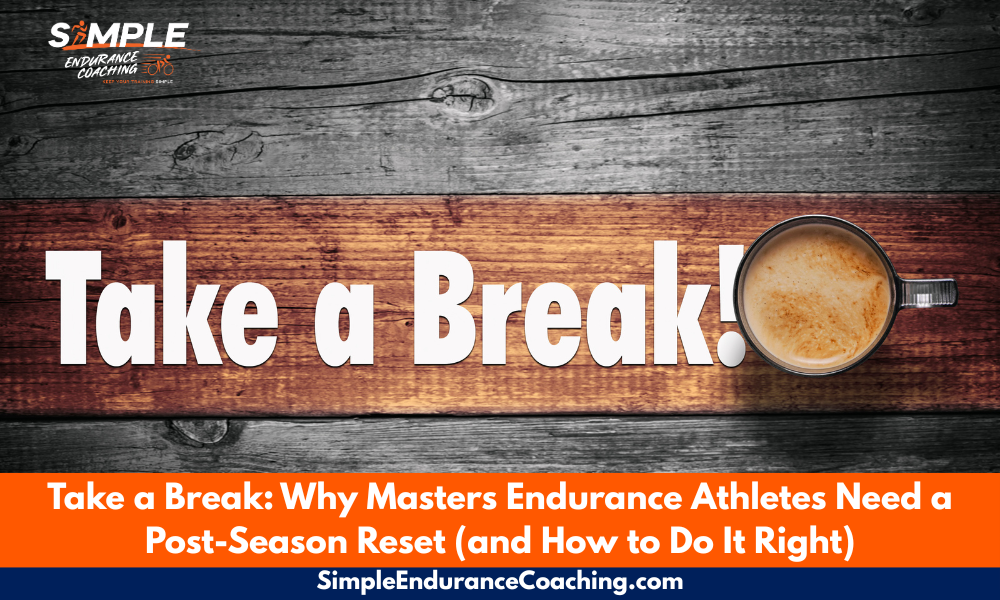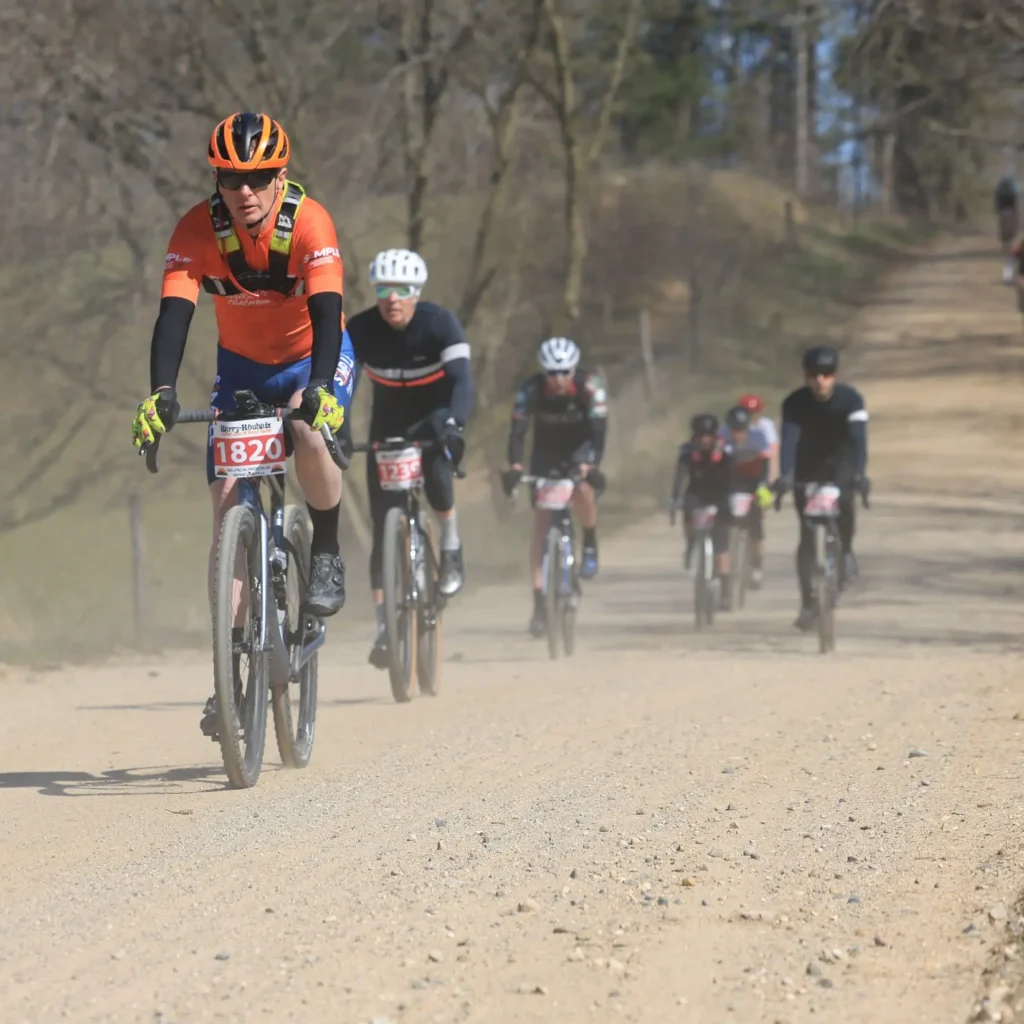Base Training for Cyclists, Runners, and Triathletes: How to Build Endurance, Strength, and Recovery for a Successful 2025 Season
As we look toward the 2025 season, it’s time to lay the foundation for your best year yet.
This begins with a structured base period, a crucial phase in any endurance athlete’s training plan.
Base training builds the aerobic endurance, strength, and durability needed to handle more intense phases later on and helps you perform at your peak when it matters most.
Here are some things you need to know about structuring your base training period to prepare for a strong season ahead.

1. Understand the Purpose of Base Training
The base phase is designed to develop a deep aerobic foundation and build muscular endurance, which are essential for endurance athletes
Whether you’re preparing for gravel racing, trail running, or something else, by focusing on steady, lower-intensity efforts, you allow your body to adapt gradually to training stress, which helps reduce the risk of burnout and injury as your season progresses.
Why it’s called ‘base’: Just like building a house, the base is your foundation. Without a solid foundation, it’s challenging to support the demands of race season, where speed, power, and anaerobic capacity come into play.
2. Set Up a Plan for Aerobic Endurance
Aerobic endurance is the bedrock of your base training.
For cyclists and runners, this means spending most of your training time at low to moderate intensities (around 60-75% of your maximum heart rate).
By doing so, you’ll increase your body’s efficiency in using oxygen and improve fat metabolism, both of which are critical for long events and races.
Here are some workouts I assign to my athletes:
- 20/20s, where riders spend 20 minutes in zone 1, and then 20 minutes in zone 2 and cycle back.
- Long, easy run/walks, keeping your HR below 75 percent of maximum.
- Alternating higher and lower cadences on the bike
These sessions should make up most of your base training to ensure a solid aerobic base.
3. Balance Volume with Intensity
While base training primarily focuses on lower-intensity efforts, make sure you add at least one short, controlled higher-intensity sessions.
- Include one shorter session per week with 4-6 low-cadence intervals (50-70 rpm for cyclists) or short hill repeats (for runners) at moderate intensity.
- Do 30/30s or a similar high-intensity interval training (HIIT) session. Ride/run at a high intensity for 30 seconds, then easy for 30 seconds. Do three to five sets of five to seven efforts.
Including VO2max efforts throughout the year has been shown to improve power at threshold as well as VO2max.
4. Include Strength Training for Injury Prevention
Strength training during the base phase supports muscular endurance, stability, and overall resilience.
Incorporate strength work at least twice a week, focusing on key muscle groups that support your sport.
Strength Training Tips:
- Full Body focus – Do full-body exercises that include a hip hinge, squat, chest push and pull, and shoulder push and pull.
- Avoid Heavy Loads Early On: Start with lighter weights and higher repetitions to build endurance, gradually progressing to heavier weights.
By building strength, you’re preparing your body to handle more intense training later in the season.
5. Cross-Train for Overall Conditioning and Recovery
Cross-training is beneficial for building a balanced body and reducing mental fatigue from repetitive workouts.
Activities like swimming, yoga, or hiking provide gentle cardiovascular work without the impact of running or cycling.
Plus different activities are a nice break from the long schedule of training.
Suggestions:
- Schedule 1-2 cross-training sessions per week, especially on recovery days.
- Yoga and mobility work can help improve flexibility, relieve muscle tightness, and promote recovery.
Remember, though, that there comes a point when your main focus needs to be on cycling or running.
6. Track Key Training Metrics to Monitor Progress
Tracking your progress is essential during base training.
While this phase emphasizes lower intensity, you’ll still want to measure specific metrics to ensure you’re progressing.
Metrics to Monitor:
- Heart Rate Variability (HRV): A good indicator of recovery and adaptation. I use HRV4Training
- Perceived Effort (RPE): Track how hard each session feels, which can indicate progress as the season progresses.
- Power Output (Cyclists) or Pace (Runners): Aim for consistency at low-intensity efforts, as this shows you’re building endurance.
These metrics will also help you know when your body is ready to transition from base training to more demanding sessions.
Also, this is a good time to track your nutrition, to make sure you’re getting enough calories and enough protein.
7. Transitioning from Base to Build Phase
Knowing when to progress is critical for avoiding plateaus.
As your base phase wraps up, you should feel an improvement in endurance and stability, along with less perceived effort during long rides or runs.
Signs You’re Ready to Transition:
- Able to sustain long, steady efforts with lower perceived effort.
- Improved recovery rates between workouts.
- Consistent strength and stability during sessions.
When you reach these benchmarks, you’re ready to introduce more intensity, such as interval training and race-specific workouts, marking the transition into the next phase of more race-specific training.
Three Things To Know About Building A Base
- Build aerobic endurance with steady, low-intensity training
- Incorporate strength and cross-training for injury prevention and balance
- Track progress and know when to transition
Need more?
Unlock the secrets to mastering gravel racing with my FREE 24-page Guide to Gravel Racing! Get yours here.
SIGN UP FOR A FREE Virtual Coffee so we can discuss your goals, ask questions, and talk about making your endurance training more effective, fun, and Simple.
Paul Warloski is a:
- USA Cycling Level 1 Coach
- RRCA Running Coach
- Training Peaks Level 2 Coach
- RYT-200 Yoga Instructor
- Certified Personal Trainer




